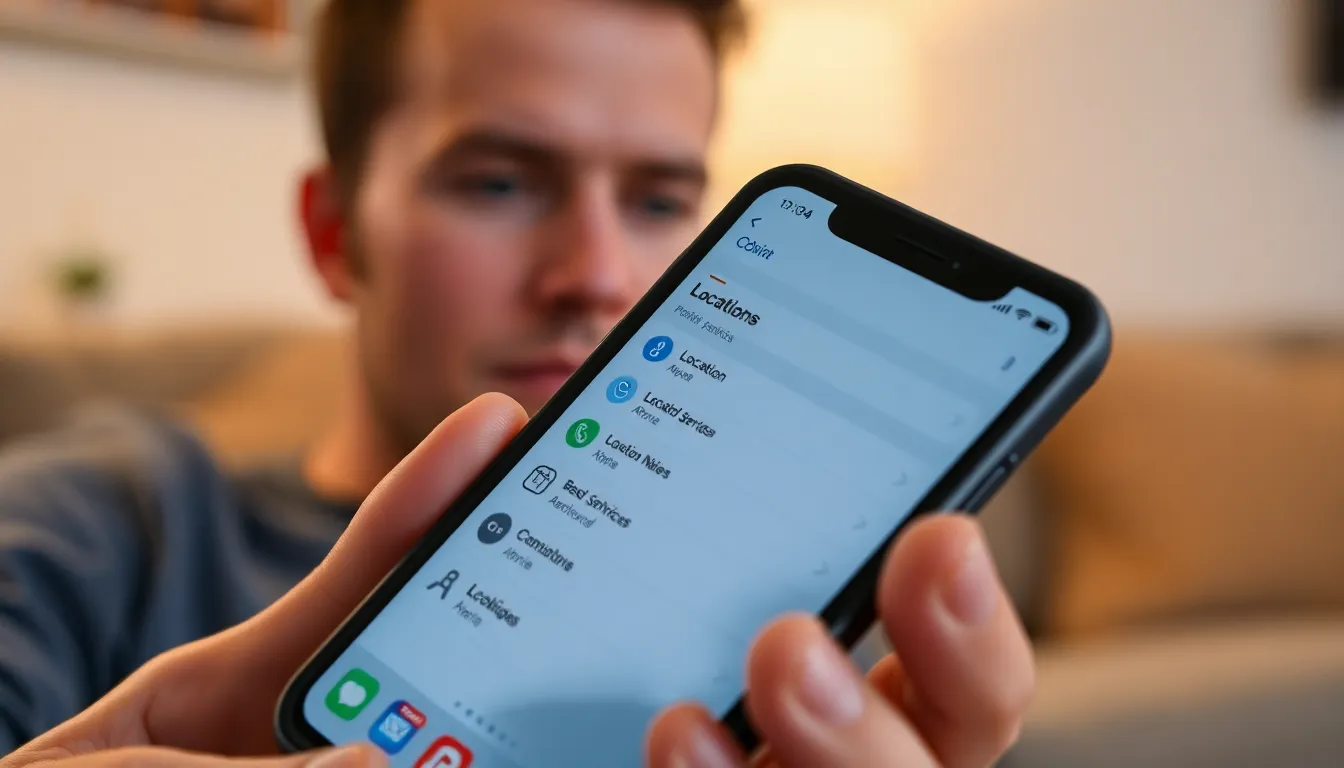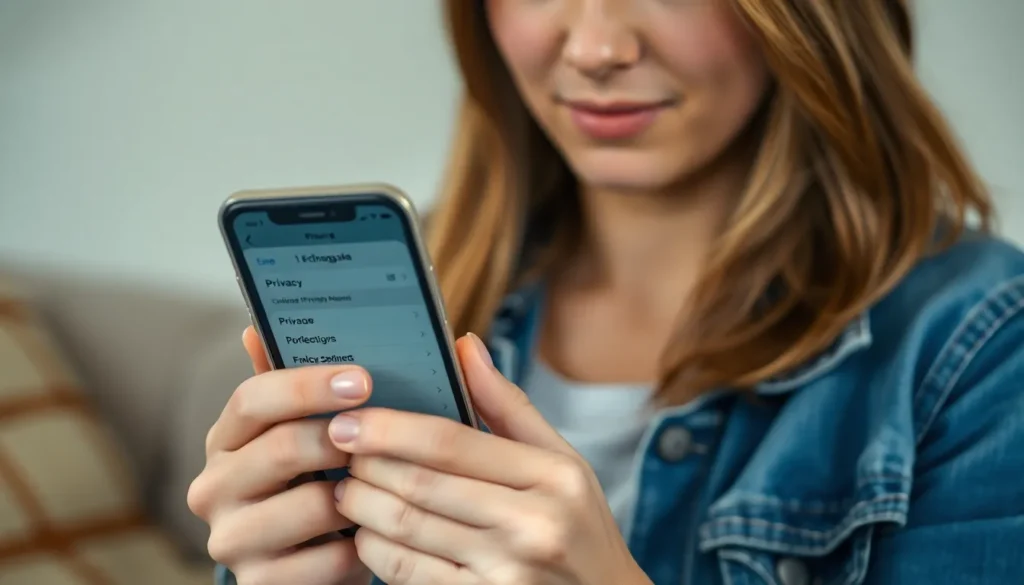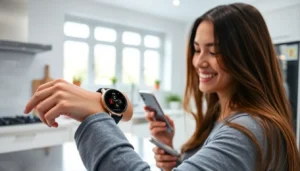Table of Contents
ToggleIn today’s tech-savvy world, it’s easy to feel like someone’s got their eyes on you—especially if you’ve got an iPhone glued to your hand. Whether it’s a nosy ex or a well-meaning family member trying to keep tabs, the thought of being tracked can make anyone feel like a secret agent on a mission. But fear not! There are ways to sniff out those digital spies and reclaim your privacy.
Signs Your iPhone May Be Tracked
Several signs may indicate that an iPhone is being tracked. Users should remain vigilant and pay attention to their device’s behavior.
Unusual Battery Drain
Unexpected battery drain can signal tracking software running in the background. If the battery level drops significantly during regular usage, this situation may raise suspicions. Tracking applications often consume extra battery power as they transmit location data. Monitoring battery health through settings can provide insights. Frequent charging or rapid power loss might suggest unauthorized access.
Unexpected Data Usage
Unexplained increases in data usage can point to tracking activity. iPhones typically have data allowances monitored in settings, making it easy to spot unusual spikes. Users should compare data usage to past months to identify significant changes. Continual background location tracking or discreet data transfers lead to higher data consumption. Verifying data app usage can indicate if an unknown app consumes excessive resources.
Strange Notifications
Receiving strange notifications can signal the presence of tracking software. Alerts from unknown applications or services might indicate that someone is monitoring the device. Users should keep an eye out for messages that suggest unauthorized access, such as alerts about new logins or access attempts. Regularly reviewing notification settings can help identify any anomalies. Ignoring these notifications may lead to potential privacy breaches.
Checking Your iPhone Settings

Checking iPhone settings helps determine if there’s any tracking. Specific analyses of location services, device management, and privacy settings reveal important indicators.
Location Services
Location services track a device’s geographic position. Users should navigate to Settings, then Privacy, and select Location Services. A list of apps will show which ones access location data. If unfamiliar apps are listed or settings allow them to access constantly, this could indicate potential tracking. Disabling location access for suspicious applications is necessary to enhance privacy.
Device Management
Device management settings allow monitoring of apps and profiles. To explore these settings, users can check under Settings, then General, and select VPN & Device Management. Any profiles listed that seem unfamiliar warrant further scrutiny. Unauthorized management profiles may enable tracking, prompting users to remove them immediately. Ensuring that only trusted sources control device management is crucial.
Privacy Settings
Privacy settings control data access and permissions. Accessing these settings requires users to head to Settings then Privacy. Each category shows which applications access various data types. If a single app has permissions that seem excessive, modifying those permissions is advisable. Adjusting settings helps protect the user’s personal information from unauthorized access.
Using Built-In Tools to Detect Tracking
Using built-in tools can help identify if an iPhone is being tracked. Users can leverage these features to enhance their privacy and detect any unauthorized access.
Find My iPhone
Find My iPhone serves as a useful tool in determining the device’s security. This feature allows users to see the devices associated with their Apple ID. Accessing the feature involves going to Settings, tapping on [Your Name], and then selecting Find My. If an unfamiliar device appears, it could indicate tracking. Users should ensure that only their authorized devices display on this list. They can also turn off Find My iPhone to prevent others from tracking its location.
Alerts and Notifications
Unexpected alerts and notifications often signal potential tracking. Users should be attentive to notifications from unknown apps or services. Unfamiliar apps requesting location access may indicate unauthorized surveillance. Checking for alerts that seem out of the ordinary can help detect tracking attempts. Notifications about significant location changes can also suggest that the device is being monitored. Staying informed about what apps access their personal data forms a crucial part of maintaining privacy.
Third-Party Apps for Tracking Detection
Third-party apps can enhance the ability to detect if an iPhone is being tracked. These tools help users identify potential intrusions and provide additional layers of security.
Recommended Apps
Many reliable apps offer tracking detection features. mSpy and SpyHunter provide detailed insights into unauthorized access. Find My iPhone serves as a built-in tool to locate devices linked to the Apple ID. Lookout offers security monitoring for apps and potential threats. When selecting an app, consider its reviews and functionality to ensure effectiveness.
How to Use Them Safely
Using tracking detection apps requires certain precautions. Always download from official sources, such as the App Store, to minimize risks. Read user reviews to better understand the app’s performance. Configure app settings to customize notifications and alerts according to individual preferences. Regularly monitor app activity for any unusual behavior. Be vigilant about granting permissions; limit access to sensitive data as much as possible.
Being aware of the potential for tracking on an iPhone is essential in today’s digital landscape. Users can take proactive steps to safeguard their privacy by monitoring their device’s behavior and settings. Regularly checking location services and app permissions can help identify any unauthorized access.
Utilizing built-in tools like Find My iPhone and considering reliable third-party apps can further enhance security. Staying vigilant about unexpected notifications and data usage will empower users to maintain control over their personal information. By following these guidelines, iPhone users can significantly reduce the risk of being tracked and ensure their privacy remains intact.




